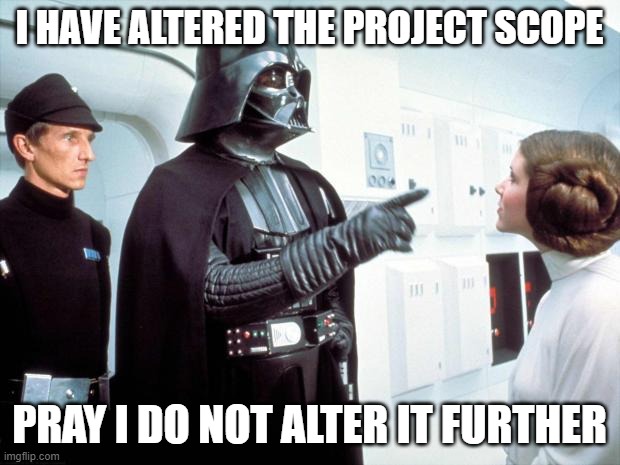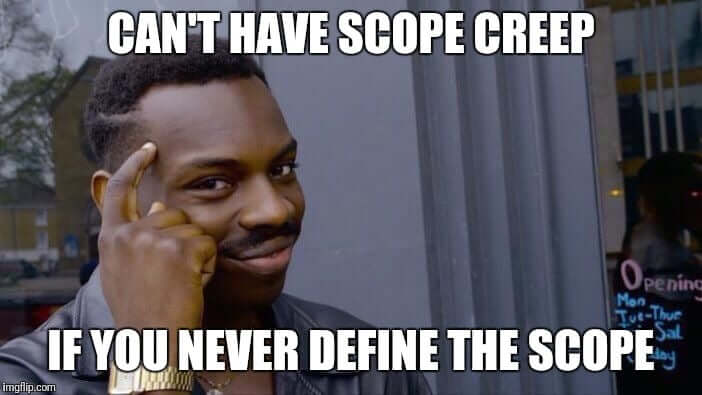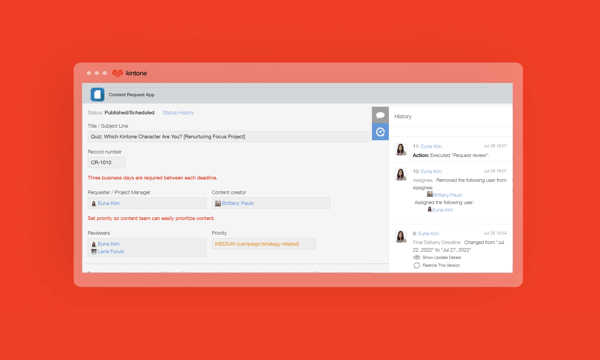A lot of days, project management can feel like this:

There’s an endless list of things to keep track of, from data to personnel to deadlines…and all of it can be in constant flux depending on the nature of the project or the wants of your stakeholders.

While some challenges are unique to the business, there are five common ones project managers can find themselves facing:

1. Missing and/or siloed data
Depending on what your team uses to share data, you might have three or more places where your information might be at any time. On average, large companies use 175 business apps to track their data, workflows, and communications. Smaller companies use 73. Of those various apps, departments might use anywhere from 40-60 of them, with individuals accessing nearly 10 of those daily. While all these apps might add up to a whole lot of data, it can also add up to a whole lot of silos. And while some teams take to integrating data from various apps with spreadsheets, this can lead to another problem: various versions of data being stuck on someone’s desktop or in an inbox conversation.
How Kintone helps:
Kintone lets you create the custom databases you need to track whatever matters to your business in a single platform. So if you’re a sales team that wants to track client data, a marketing department with a tight editorial calendar, or an HR team that needs to manage employee onboarding, it’s possible to track the data that matters to you without having to purchase another software subscription to do so.
How do you get this kind of customization? It’s simple with Kintone’s no-code drag-and-drop interface, which lets you build your desired database field-by-field.

2. Unclear project scope
Murphy’s law typically states “anything that can go wrong will go wrong.” If there were an equivalent project manager law it might read “anything that can change will change.”
Project scope remains a perennial battle for project managers in every industry; nearly 50% of businesses experience scope creep, with management, clients, or even vendors adding requirements after a project is underway. While scope changes aren’t always an issue in and of themselves, effectively tracking them is.
How Kintone helps:
While Kintone can’t keep your projects from changing, it can help you codify and track changes so tasks and responsibilities don’t get dropped in the process. Kintone workflow management tools let you organize complex processes and projects into automated workflows you can track from start to finish. Even if you need to add an extra step (whether it’s getting higher level approval or doing a fourth round of feedback), these changes can be added to an existing workflow without hassle. This is possible with Kintone’s drag-and-drop interface, which lets users create custom workflows without knowing how to code or lean on IT for support.

3. Scattered communication
Slack, Zoom, Microsoft Teams, Gmail, Office, etc. For many companies, the list of communication tools is almost as long as the list of streaming services we pay for (Rings of Power, anyone?). But while these tools make it easier to strike up conversations with remote team members, they also make it harder to a) stay accountable and b) keep track of critical conversations around projects.
“Ineffective communication is the primary contributor to project failure one third of the time, and had a negative impact on project success more than half the time.” - Project Management Institute (PMI)
Similar to the problem of siloed data, siloed chat tools make it hard to track, archive, and share important conversations. This challenge is multiplied when it comes to keeping conversations tied to the information being discussed.
How Kintone helps:
Collaboration is a critical part of your business, which is why it’s a built-in part of Kintone’s platform. Kintone’s collaboration tools let team members talk, tag, and share important conversations with one another alongside the data being discussed.
By keeping conversations in context, you can make decisions with all the information on hand. These conversations also stay visible and searchable, so team members and managers can stay caught up on discussions that happened while they were out of office or otherwise occupied.

4. Too much manual follow up
It’s easy to lose a day chasing after team members about upcoming deadlines and tasks. While this isn’t outside the role of a “manager,” the work itself is often tedious, manual and doesn’t require much of the innovation and creative capabilities of a project manager. In fact, it’s the perfect kind of routine work automation was made for.
How Kintone helps:
Kintone helps offload the burden of following up with automated reminders and notifications that can be customized to share any message you like. Maybe it’s a general reminder that tells someone when a deadline is three days out, or an automated notification that a coworker’s task has been reassigned to someone else.
These notifications let you automate the tedious stuff while ensuring you and your team never lose sight of your priorities no matter what distractions you might be facing.

5. Overly dependent on individuals
This one might seem strange, but it’s one of those “it’s not a problem until it’s a problem” problems. Let’s back up and start with a statistic: only 23% of organizations use standardized project management practices across an organization. Which means for the remaining 77%, project management (and workflow management in general) is based around how the individuals in that team works. Which sounds fine…until a teammate leaves for a new job. Or is out sick. Or decides to keep client information to themselves (yep, it happens).
Then suddenly those processes, which were built around that person and their unique knowledge, no longer work. And there’s no one else there who can easily or quickly fill that gap.

How Kintone helps:
Kintone lets project managers create custom workflows that standardize how tasks play out, meaning the order of handoff, the steps involved, and the members assigned at each phase are all clear from beginning to end of given task. Whenever a new task is created and enters the workflow process, not only does its status and "assigned to" stay visible, but any changes to the record (such as if it's reassigned to another team member because the original owner is out sick) are added to the quick-view history.
This makes it easy for project managers to not only see where a given task stands, but to better understand how long a task stayed in each phase on its road to completion. This can be a great way to spot potential bottlenecks, duplicate steps, or room for improvement (such as there being too many tasks on a singular individual).
In Summary
Kintone offers a wide variety of data, workflow, and conversation management features that help project managers keep on track of even the wiliest of projects. If you'd like to learn more about how Kintone can help your projects in particular, schedule a one-on-one consultation with one of our product experts. A 15-minute conversation can help you see if Kintone is right for you.
About the Author
Michelle is the Content Marketing Specialist at Kintone. She is a content marketing expert with several years in content marketing. She moved to San Francisco in 2015 and has experience working in small businesses, non-profits, and video production firms. She graduated in 2012 with a dual degree in Film and English.









